Hello again to our dear readers! I welcome you to my province this time, the province of Ilocos Norte! It's been a long time since I last visited my home province, and it was amazing to see that so many things have changed since I was there last. Allow me to take you around to the places we visited while we were there.
The picture you see above is one of Pagudpud, the northernmost town of Ilocos Norte. Next to that will be the province of Cagayan. So after visiting Vigan, we drove northward and we arrived in my home province, the province of Ilocos Norte.
Since it was the first time for both of my friends to visit, we stopped the car at the marker where Ilocos Sur ends and where Ilocos Norte starts, which happens to be my home town, the town of Badoc. As the sign says, I also say to you, welcome to Ilocos Norte!
As you enter the town of Badoc, you get to see this statue of two men- they are the brothers Juan and Antonio, brothers who are both Filipino heroes. One was a famous painter, and the other one a general. They were born in the town of Badoc, and so they are our pride.
This building is the municipal hall of the town. It has already become so big and nicely painted. Back in my childhood it was a lot smaller and there was no nice paint like this, ha ha. Just shows how much things have changed ever since I was last here.
This is the St. John the Baptist Parish church, which is more than 200 years old. It houses the statue of the La Virgen Milagrosa, which is a statue of the Virgin Mary which was found floating in the sea by some fishermen back in the year 1620. This is one of the icons of Badoc.
Another famous landmark in Badoc is the Luna Shrine, which is the house of the late Juan Luna, the famous painter who painted the Spoliarium, a painting that won a gold medal at the Exposición Nacional de Bellas Artes in Madrid in the year 1884 in Madrid.
Sadly, it was closed when we were there, as it was undergoing renovations, so we were unable to go inside. Back when I was in elementary school this house was just walking distance from home.
Outside the house is another statue of him and some paintings (printed) displayed around for people to see and admire. Not sure if those were also some of his works.
For lunch we stopped at the house of my best friend in high school in a town called Currimao, and we were served a sumptuous Ilocano lunch.
After lunch we visited the late President Marcos' house in Batac, to let my friends see his embalmed body on display. Taking photos was not allowed so after looking around, we went to have the empanada and miki, a noodle dish with soup which is a specialty of the town.
After having snacks, we drove to neighboring town of Paoay to visit the Malacañang of the North, which was the residence of the family of Ferdinand Marcos when he was president of the Philippines.
It is now a presidential museum that displays the furnishings and some other things that the family used while they resided there. The other house in Batac displays the awards of Marcos when he was a student and other mementos during his life.
The house of course is huge. It was built by then the Philippine Tourism Authority, to be used a residence for the president's family whenever they were in Ilocos, as Marcos was born in Batac.
The mansion has seven rooms, which was supposedly a lucky number for Marcos, each having its own theme of historical events from the Marcos era.
One of the bedrooms. I loved seeing all the wooden furnishings. The old chest at the foot of the bed must be an antique already. Or not.
This is the area that faces the Paoay Lake.We can also see the balcony on the second floor. Imagine reading a book on the balcony on a lazy afternoon, the birds chirping outside, and the water reflecting the setting sun perhaps.
One of the dining tables in the mansion. Imagine having guests enjoying a sumptuous meal at this table.
This is the lake in front of the mansion, and it is the largest lake in the province. It has an average depth of 6 meters or around 20 feet deep.
One of Imelda's imeldific gowns. She must have had so many of these in her wardrobe back then.
This is the balcony from the second floor that overlooks Paoay Lake.
A receiving area.The windows are made of capiz shells, and they are sliding to provide ample ventilation to the place.
Another dining table. Perhaps for when there are no guests? Just for family?
They must have opened these folding doors when there were parties so guests can mingle and walk around freely.
All solid wood furnishings. How much polishing they do to maintain the shiny floor is a mystery to me. Just curious.
The lake as seen from the second floor balcony. Quite a nice view, eh?
Near the mansion is of course the Paoay sand dunes, where thrill seekers can opt to ride a 4x4 vehicle and ride around while screaming at the top of their lungs and holding on for dear life.
After that we went to the town proper of Paoay to visit the Paoay church and the surrounding area.
On the side of the church is a garden where people can relax and enjoy. There are benches, and there is also a souvenir shop nearby.
I believe Paoay church is the oldest church in Ilocos Norte, and it has been declared a National Cultural Treasure by the Philippine government in 1973. It is also a UNESCO World Heritage Site under the collective group of Baroque Churches of the Philippines.
Completed in the year 1710, the church is famous for its distinct architecture and its buttresses on the sides and back of the building.
This is the garden on the side of the church and anyone can freely walk around and enjoy the view, or sit in one of the benches nearby and just rest from all the walking.
We see some of the buttresses on the side of the church as well here in this picture. The buttresses were put as possible reinforcement to the building in case of earthquakes.
The belfry was constructed separately on the side and at one time it served as an observational post for the Filipino revolutionaries against the Spaniards in 1898 and by the Filipino guerrillas against the Japanese soldiers during World War II.
After Paoay, we drove past Laoag City, the capital of Ilocos Norte and drove further up north for a couple of hours to get to Pagudpud. On the way the sun was setting in Pasuquin, so we parked the car and tried to take a picture of it.
From Pasuquin onwards are already coastal towns with beautiful beaches. Here are the towns where sea salt is made and sold by the sacks. Fishing and farming are the main sources of livelihood in these towns.
We drove further until we got to Pagudpud, until we found a place to stay. In the areas near the beaches, most families rent out rooms or whole houses for vacationeers. We found a house and paid 500 pesos per head for the night, which was a bargain. These houses are called home stays.
We woke up the next day and explored the beach nearby. It was white and, very clear waters and very fresh air that greeted us.
Since it was very early, there were very few people at the beach, so we enjoyed walking on the powdery white sand.
There are also cottages for rent for people having picnics during the day, and rent is usually for the whole day and not per hour. There is usually a fee per head for about 20 pesos or so.
Imagine having this neighborhood and you can walk on the beach every morning or late afternoon. Bliss. Ah, I can only wish.
We only put our feet in the water as we did not bring swimsuits with us as our plan was to go touring around. It would have been nice to have swam for a bit though. Next time.
Imagine the hard work these fishermen have as they go out into the sea all night to catch fish, so that they could sell some and then eat the rest.
Looking at the picture, I still remember the feeling of the water on my feet. So refreshing .
There was no way I could climb these trees and drink the juice from the fruit, ha ha ha.
The water was very clear and clean indeed. Hopefully it stays that way always.
After some time, we had to say goodbye to Pagudpud to explore other places.
Since we were already in Pagudpud, we drove to see the Patapat Bridge, the 5th longest bridge in the Philippines. It connects Maharlika Highway from Ilocs region to Cagayan Valley. So when you get to the end of the bridge, you are already in Cagayan Valley.
The bridge is elevated 31 meters above sea level and it is 1.3 kilometers long. Driving along the bridge gives you a view of the ocean on one side and the mountain on the other side. At the end of thr bridge, there was a natural spring and we drank from it and refilled our water bottles. The water was so fresh and clean.
We also saw these rice fields on the valley below. Since it was still morning, there was still somewhat a morning mist. It was beautiful so we stopped the car again to take pictures.
A few months after, the rice would grow its grains and then a couple of months more after that, it would be harvest time and they would look golden in the fields.
We then drove to a waterfalls resort nearby, just to take pictures yet again, as we did not bring any swimsuits.
The falls was quite big, and there was still quite a lot of water flowing down considering that it was beginning to be the hot dry months. The water was still cold so it was very refreshing to put our feet in the water.
There are cottages again, perfect for picnics and for taking lots and lots of pictures.
After taking some pictures, we started driving southwards again, this time to Burgos, to visit one of the tourists visit.
We drove south all the way to Burgos to see the Kapurpurawan Rock Formation. Burgod is an hour's drive away from Laoag City. It is named Kapurpurawan because of its color. Puraw in Ilocano means white.
The formation was formed by the winds and sedimentation. People can go down a set of stairs, and it is not very steep so even the elderly can go and visit. Visitors are require to pay a 15 pesos environmental fee to maintain the cleanliness of the place.
The rock formation itself is now cordoned off to people because some irresponsible visitors before tried to climb it and thus endangering it. Now people can only see it and take pictures of it from a distance.
There was also this tone pagoda that I saw, which I also see in some Korean dramas.
Also in the area is a stataue of 'Biag ni Lam-Ang' an epic Ilocano poem. Not sure why they put it there though, and I can no longer remember what the poem says about the life of Lam-ang.
We could see the blue ocean in the distance, and we just took pictures quickly before leaving yet again. The sun was just too hot to bear, even with umbrellas shielding us from it.
It does look nice from a distance, and hopefully it gets preserved so that people can keep coming to visit this place even in the future.
From down below we can also see some of the windmills that harvest the energy of the wind and it is then converted into electricity. Clean energy is being used in the province of Ilocos Norte.
After Burgos we drove all the way back to my hometown to visit relatives, and we were fed lunch, and we spent some time just chatting, until it was time for us to go back home to Manila. We were given fresh vegetables and fruits to bring home, another trademark hospitality of the Ilocanos. All in all, it was a nice, albeit very quick visit. Hopefully the next one will be longer so that I get to swim somewhere.
I bid you adieu with this picture, and until then, have a great weekend! For more travel articles, please go to this page.






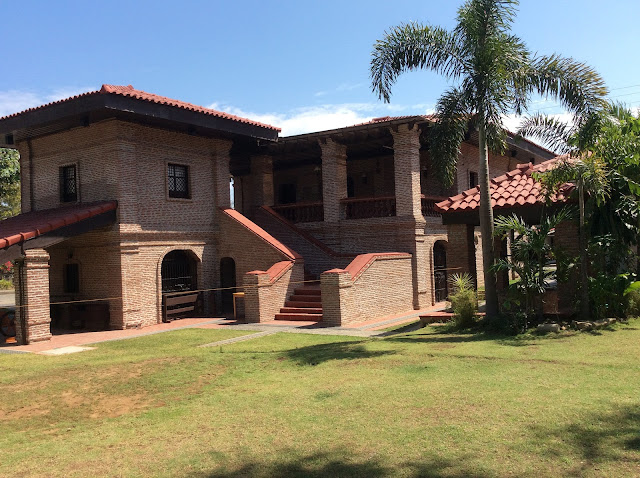






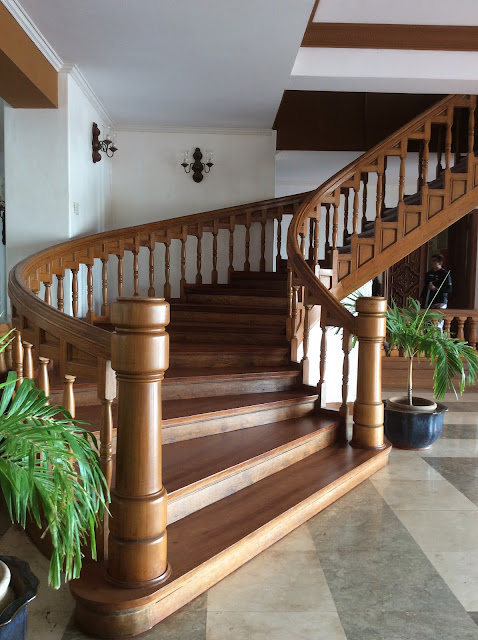
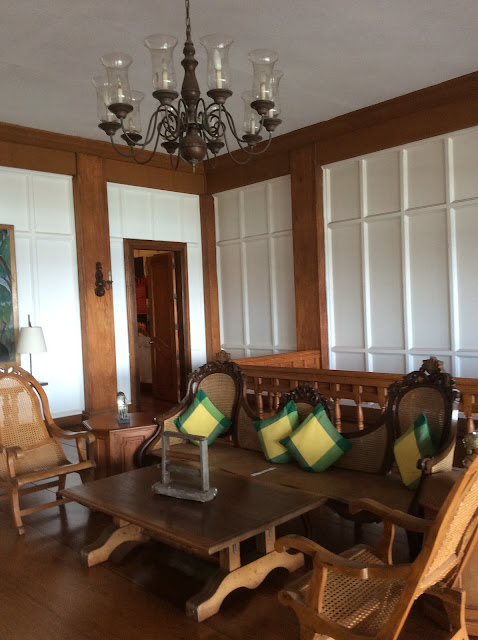







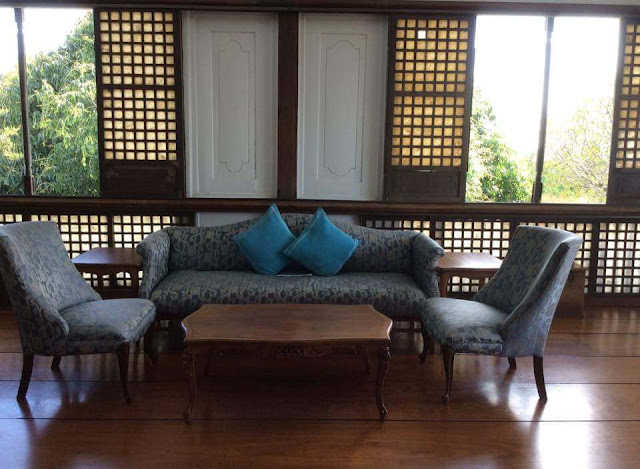
















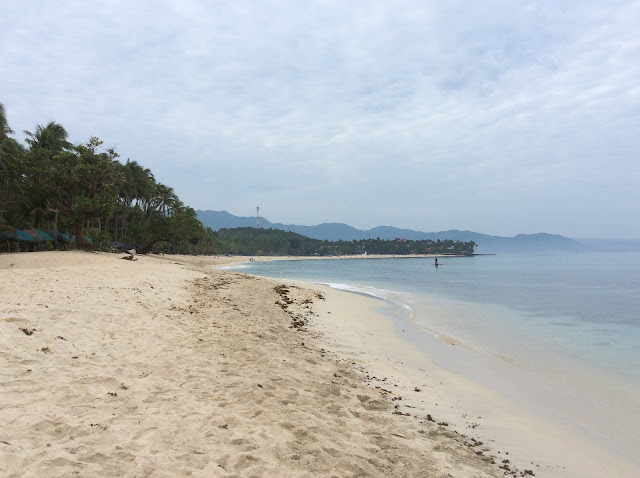


















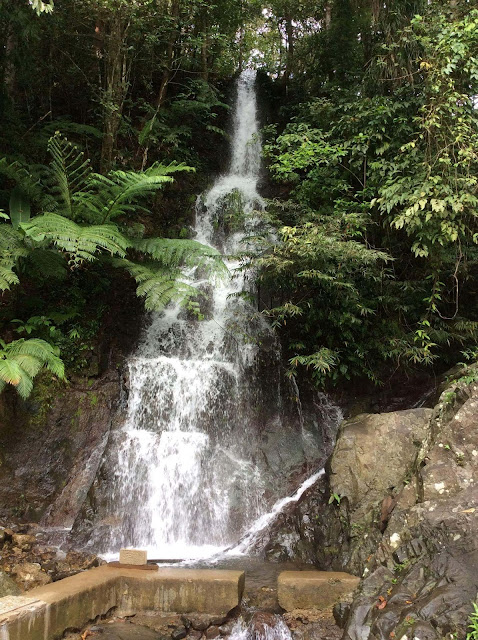
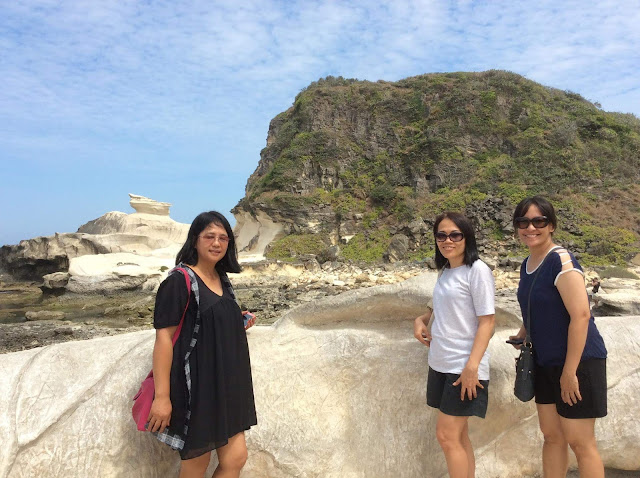







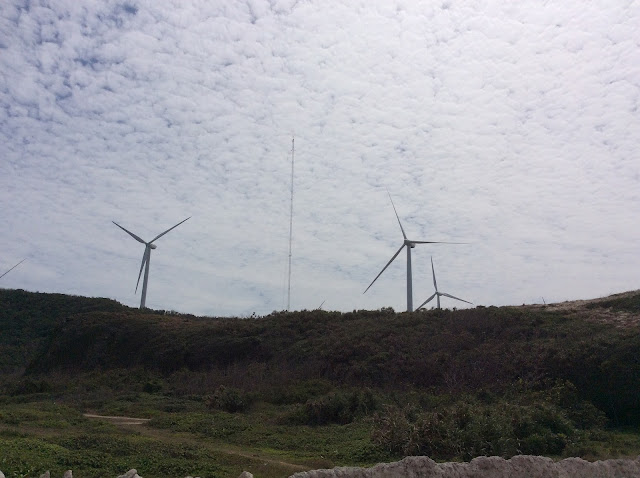

Comments
Post a Comment